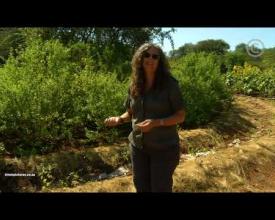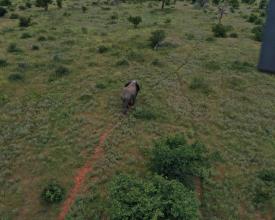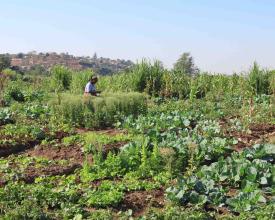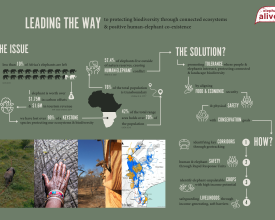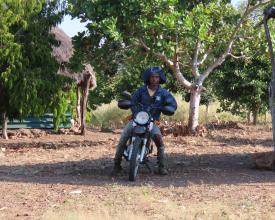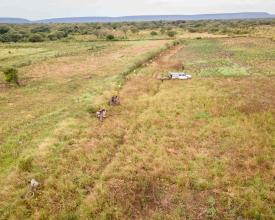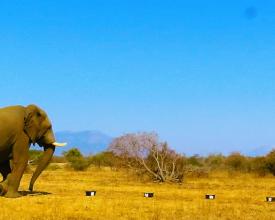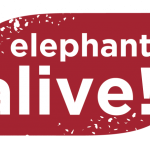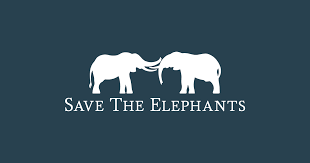
A Phased Approach to Increase Human Tolerance in Elephant Corridors to promote ecosystem connectivity
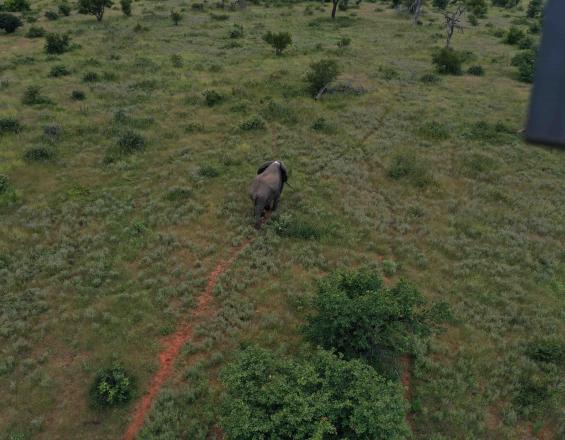
Pathfinding elephants are moving through human-dominated landscapes, often across international boundaries. By doing so, they play a vital role in connecting Protected Areas (PAs) but also encounter Human-Elephant Conflict (HEC) that threatens lives and livelihoods. Our solution proposes a long-term strategy to conserve elephant corridors whilst incorporating the socio-economic needs of the people that share the landscape with them. GPS tracking of elephants across two transfrontier conservation areas flags where linking corridors exist and thus where to focus resources. We use innovative cafeteria-style experiments to understand which elephant-unpalatable plants would offer lucrative alternative income streams to farmers living in those HEC hotspots. Lastly, we combine food security and people’s safety by deploying Rapid Response Units and soft barriers to protect subsistence crops. This phased strategy enables the protection of bioregions to achieve biodiversity objectives at landscape scale.
Context
Challenges addressed
Human-Elephant Conflict is threatening the immediate physical safety of both elephants and humans, with fatalities occurring on either side. In addition, crop-raiding threatens livelihoods of subsistence farming communities living along wildlife corridors. If left unaddressed, important corridors linking fragmentised Protected Areas will be closed off, as elephants will avoid using corridors based on learnt fear or physical barriers (electric fences). This will result in declining elephant populations and have disastrous effects on all wildlife migrations between increasingly isolated protected areas. The IUCN’s Guidelines outline the importance of connected ecosystems to enable essential ecological functions such as migration, hydrology, nutrient cycling, pollination, seed dispersal, food security, climate resilience and disease resistance. The subsequent biodiversity loss would negate all economic advancements made in rural communities and accelerate negative impacts from climate change.
Location
Process
Summary of the process
Protecting African elephants and their habitat in bioregions requires a multidimensional and integrated approach of community engagement, knowledge creation and practical conservation action. This includes mapping elephant movements outside of protected areas to understand landscape connectivity, concentration of mitigation efforts in HEC hotspots, and experiments to evaluate alternative crops for communities affected by HEC.
A combination of hard barriers (electric fences) around small subsistence crop fields that do not prohibit the movement of elephants, with income-generating soft barriers (unpalatable crops with a market value, pollinated by beehive fences), can help mitigate conflicts over the long term; whilst a reactive Rapid Response Unit can ensure immediate safety in high-conflict areas. In crop-raiding hotspots identified through tracking data and reported information via RRUs, farmers can be encouraged to only farm with viable unpalatable crops with high market values and yields. Combining income-generating soft barriers, such as planting high-value crops with a mutually reinforcing relationship of pollination for beehive fences, promotes biodiversity outcomes and supports rural economies in and around wildlife corridor regions.
Building Blocks
Mapping wildlife corridors linking Protected Areas using satellite tracking of elephants
Starting from the knowledge that over 50% of elephant movements are outside of Protected Areas (PAs) and over 75% of elephant populations are transboundary, we used a satellite tracking approach to identify which wildlife corridors are most used by elephants.
While our initial plan was to establish a corridor between Gonarezhou (high elephant density) in Zimbabwe with Banhine and/or Zinave National Parks (low elephant density) in Mozambique, insufficient tracking data and reports linking the PAs in these countries (Zimbabwe to Mozambique) to define a conclusive corridor has made us shift our geographical location to Namaacha Valley in southern Mozambique. Here several elephants that we had collared outside of PAs in the hope to find more corridor moving individuals between PAs across southern Mozambique, have defined a vital corridor covering the southern extreme of the KNP, south towards Tembe National Park in South Africa and east towards the Futi corridor and MSR on the coast of Mozambique.
The collaring of elephants and analysis of the tracking data have shown us that existing PAs are too small for elephants. Using elephants as the landscape planners for connectivity across national boundaries, enabled us to identify human-elephant conflict hotspots where efforts are most likely to have the largest impact.
Enabling factors
- Sufficient funds to purchase collars and pay for helicopter fees are critical to the success of this part of the strategic plan.
- Helicopter & pilot availability can be challenging in remote areas.
- Cooperation from the community on where and when elephants are in the corridor regions.
- When working in a large Transfrontier Conservation Area, logistical support from partner organisations is key for successful longterm implementation.
Lesson learned
We have learnt that corridor moving elephants are wily and are thus not often seen during the day when they can be collared. They have hideouts during the day to avoid conflict with people. We have managed to find suitable study animals by collaring one or more bulls within a group of bachelor bulls close to the border of protected areas or even within protected areas. This has helped us find additional animals when the groups split up over time. Also having a mobile Rapid Response Unit informing us of elephant movements, has helped us supply collars when needed to the Mozambique Wildlife Alliance who can deploy them quickly and efficiently on the ground. Writing ahead of time for funds via grants, has also enabled us to have funds. Expensive helicopter flying time and availability of pilots has remained a challenge.
Rapid Response Units as a short-term solution ensuring immediate physical and livelihood security
In order to address urgent HEC incidences, a Rapid Response Unit (RRU) has been established. The need for the RRU was justified due to the increasing pressure from district authorities, who do not have the capacity to mitigate HEC incidences. Consequently, higher levels of government are put under pressure to protect people and livelihoods, often resorting to lethal management of elephants. To avoid these lethal interventions, the role of the RRU is to (1) respond to HEC situations with near-immediate effect, (2) educate community members on how to behave around elephants and deploy HEC toolboxes more effectively, (3) systematically collect data on crop raiding incidences, mitigation methods deployed and elephant responses in order for us to develop an effective early warning system, and (4) disrupt elephant crop-raiding strategies through surprise intervention planning to ultimately contribute towards behavioural modification. The RRU is supported by the GPS collaring data when (1) identifying key human elephant conflict hotspots and (2) building crop raiding probability maps for the strategic deployment of long-term mitigation methods.
Enabling factors
- Sustainable funding & training of RRU & additional units if active across extended areas
- Increased success rate over time to prevent disillusion and disappointment in methods applied
- Optimised modes of transport and communication for RRU to be agile and quick to respond
- Continued funding to replenish used deterrent tools
- Continued support in training workshops and community ownership of mitigation strategies
- Supporting infrastructure of watch towers and soft barriers
- Behavioural modification in elephants as a result of successful deterrence
Lesson learned
Initially there was a sharp increase in the number of cases being reported at the end of the first year of operation of the RRU. After 18 months the impact of the RRU can be seen in 95% successful intervention proportion in the last six months compared to a 76% in the previous 12 months. With a 79% deterrence success rate in 140 interventions and a continued decrease in the percentage of HEC needing RRU intervention over the past 18 months, the RRU has proven its value to local farmers. They have also empowered local communities with safe and effective deterrence mechanisms to safely chase elephants away from their fields, which has meant that the percentage of conflict cases needing intervention by the RRU has dropped from 90% in the first 6 months of operation, to 24% by the 18th month of operation.
The RRU deterrence days have dramatically decreased as have the unsuccessful chases. An increase in used equipment and units of equipment can be ascribed to numerous training workshops where community members are empowered to adopt various non-lethal deterrence methods via the toolkits.
Human-Elephant Conflict mitigation through soft barriers protecting crop fields
In May 2023, the Elephants Alive (EA) team embarked on an Human-Elephant Conflict barrier implementation mission to the Namaacha Valley in Southern Mozambique. EA and Mozambique Wildlife Allience (MWA), as well as delegates from Save The Elephants (Kenya) and PAMS Foundation (Tanzania), came together in an inspirational cooperation exercise to implement a 4-way mitigation soft barrier to protect three crop fields. The fields had been identified through field research and GPS tracking data, as high-risk for elephant crop-raiding. One side of the fence was built by hanging beehives. As the hives start to become occupied with wild swarms, we will keep training local farmers on how to keep hives and colonies healthy, by assessing the frame structures and checking if the bees have enough pollen to produce honey. This knowledge will allow the farmers to increase both their crop production, protect crops from hungry elephants and supplement their income from honey sales. The second side of the fence was made up of metal strip fencing, the noise and sight of which has been proven to deter elephants from breaking into farmers’ fields. We set up the third side of the fence with chilli rags. The fourth side of the soft barrier fence was comprised of flashing lights, a technique successfully used in Botswana.
Enabling factors
- Each mitigation method is applied and maintained properly.
- Following comprehensive beekeeping training and set-up of a monitoring system, the beehive fence will be maintained.
- Bee colonies have enough available resources to prevent colonies absconding from hives.
- Keen interest from the community. This was facilitated by the previous success of the Rapid Response Units in deterring elephant crop raiding.
- Access to resources to maintain the soft barriers
- Monitoring of elephant crop raiding incidents through field reports & GPS data
Lesson learned
All barriers held up well despite two collared elephants coming close within the first month. On the 15th and 16th of June a bachelor herd broke in at the unoccupied beehives. They broke out at the chilli rags, as they had not been refreshed as taught. We have been communicating with the chief, who now sees the importance of the chilli rag refreshing routine. He has since collected more chilli and engine oil for reapplication. We have instructed that the smelly elephant repellent is hung at regular intervals of the beehive fences. The community has reported that the elephants avoid the flashing lights so on our next trip we will put flashing lights at regular intervals until the summer brings a greater occupancy of hives. Transport between the plots and supplies storage room is challenging. The straight-line distance is 5km but no vehicles are available. On our next trip, a watch tower will be erected closer to the plots, the base of which will be made into a storeroom. The responsible staff member from Mozambique Wildlife Alliance has now also acquired a driver’s licence so he can ferry supplies as the need arises.
Identifying and implementing alternative, income-generating elephant unpalatable crops as soft barriers to subsistence crops
A lot of is still unknown about elephants’ dietary preferences and deterrence crops. To expand our knowledge and create replicable methodologies, we studied elephants’ preferences towards 18 different types of crops, the majority of which are of high combined economic value (food, essential oil, medicinal and bee fodder value) and suitable for growing in Southern African climates. The cafeteria-style experiments allowed us to evaluate several plants that have never been tested in terms of their palatability to elephants. Our results showed that herbs such as borage and rosemary with medicinal and aromatic properties, respectively, were strongly avoided together with bird’s eye chilli (a well-known elephant deterrent crop). We found that lemon grass and sunflowers, presented as whole fresh plants to the elephants, were edible to the elephants. This is surprising, as both plant types have been described as unpalatable to both Asian and African elephants alike.
According to our overall scoring system, four food types proved best suited for the proposed corridor region (Bird’s Eye Chilli, Cape Gold, Cape Snowbush and Rosemary). Of these, only Bird’s Eye Chilli had been tested before. The other three plant types have been used in producing essential oil and hold great promise for income-generation.
Enabling factors
- Approval by relevant animal ethics committees
- Access to (semi-)habituated, and human-friendly elephants
- Access to fresh forms of plant crops to be tested
- Experiments to be carried out by qualified researchers, according to scientifically correct framework & methodology, subject to peer-review before publication
- Supporting staff and research network
Lesson learned
The semi-habituated elephants are intelligent and could easily become bored with the experimental setup. It did help that the set out of the food type sequence was randomised every day. We also learnt that the time of experimentation did have a role to play, thus in the afternoon the elephants seemed more hungry and agreeable to approach and test every experimental food bucket. Filming the entire experiment help with the analyses as data recording on site could become complicated depending on the elephant’s behaviour and the ability to replay the sequence of event was helpful.
Impacts
Short term: Human-Elephant Conflict (HEC) mitigation strategies resulting in reduced HEC:
- Empowering community members to confidently and safely react to crop-raiding incidents
- Decreased hostility amongst communities towards elephants, reducing the number of elephants “destroyed” by authorities or other
- Decreased human and elephant fatalities from HEC
- Safeguarding of livelihoods & food-security
Long term: increased movement of elephants between Protected Areas (PAs), promoting ecosystem connectivity:
- Facilitating transfer of genetic traits between isolated PAs
- Relief of pressure on biodiversity within isolated habitats, allowing seasonal habitat recovery.
- Identifying suitable wildlife corridors, to be used for land-use planning, decreased deforestation rates, and expansion of PA coverage
- Improving the socio-economic circumstances of communities living within/near the corridor, by decreasing dependence on dwindling natural resources:
- Introducing income-generating alternative crops for income diversification
- Mutually reinforcing alternative income streams from honey production and alternative crop cultivation
- Work towards tourism strategies aimed at increasing the financial security in favour of conservation efforts
- Promote the upskilling women into social role models
- Community-building: watchtowers as centres for knowledge transfer of mitigation methods & alternative farming and income generation
Beneficiaries
Rural communities living within and along wildlife corridors
Elephant & wildlife populations using wildlife corridors to migrate between Protected Areas
Protected Areas relying on ecosystem and economical (tourism) services from migrating wildlife
Sustainable Development Goals
Story
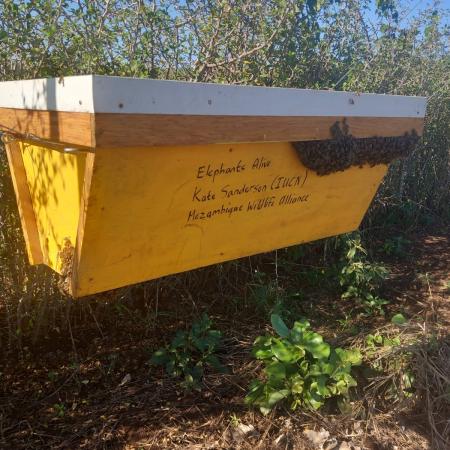
Mr. Mkwakwa represents the chief of a village situated in the Namaacha valley in southern Mozambique. He has been desperate to protect his community from repetitive elephant crop raiding, especially during the dry season. He has tried to install some solar lights on high poles in the hope that this will keep the elephants at bay. He has also tired to build natural green walls with Comniphora species on the border of the crops. None of his efforts have succeeded to the degree that he wanted to offer his community protection. As part of the Elephants Alive’ mitigation strategy we stayed in a nearby village to facilitate a training workshop on various soft barrier methods to protect crops. Representatives from South Africa, Tanzania, Mozambique and Kenya all came to share their expertise in terms of the erection of beehive fences, metal strip fences, chilli rag fences and the manufacturing of smelly elephant repellent and chilli bricks. The Chief and his wife were incredibly grateful that so many countries have pitched in to help try to solve their problems. Both Mr. Mkwakwa and his wife worked relentlessly with the teams to show both the team and his community how appreciative they all were of the assistance and guidance. He explained to us how hard things have been for them and how the elephants seem to always know when it is the right time to crop raid, just before they are ready to harvest. We explained to them how the honey will help pollinate their crops and that they can also get an additional income from the honey when it is ready for harvesting during the summer months. We mentioned that the bees function as security agents to his fields as elephants are scared of bees. We also mentioned that bees are in need of enough water. The Chief immediately set out to build a wonderful bee watering station. We explained that Elephants Alive would come back regularly to also train the community on growing plants that elephants avoid as yet another barrier to protect crops. Mr. Mkwakwa and his wife were beaming with gratitude and rushed to give us parting gifts of all that they had, shweshwe cloths and cassava roots. New friendships were formed along the journey to protect people’s safety and assets and the elephants were strangely at the centre of these bridges that were being formed between communities and people working across borders and following in the footsteps of elephants.
